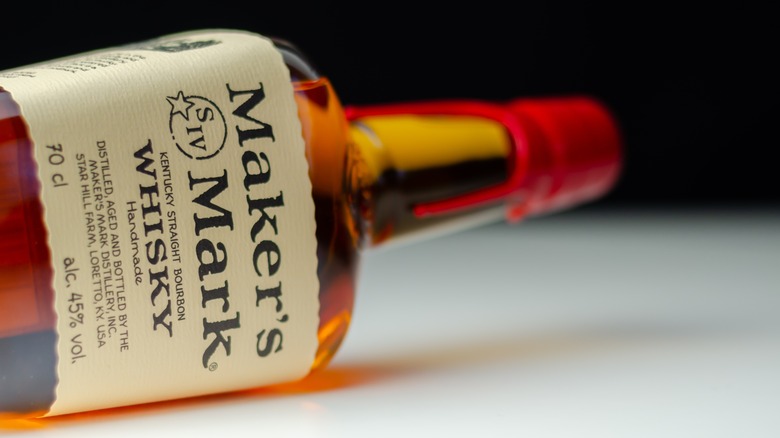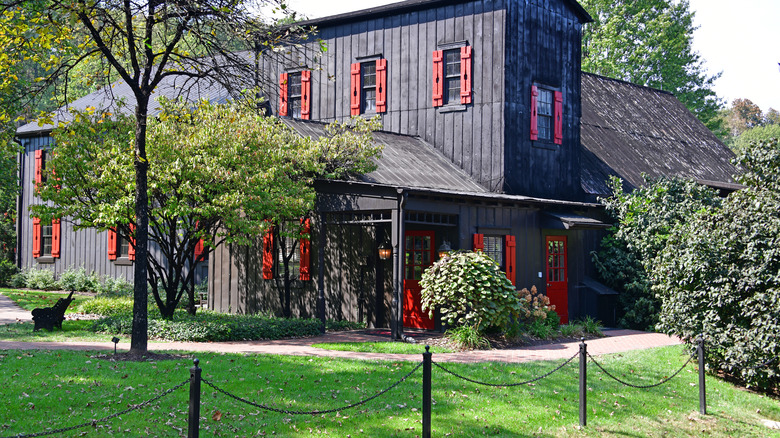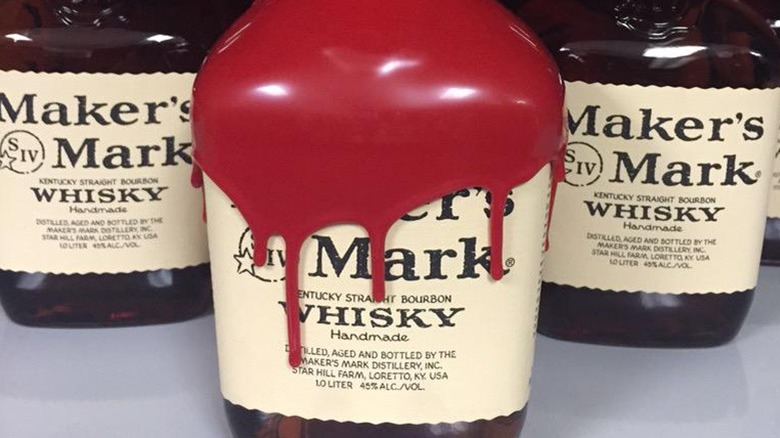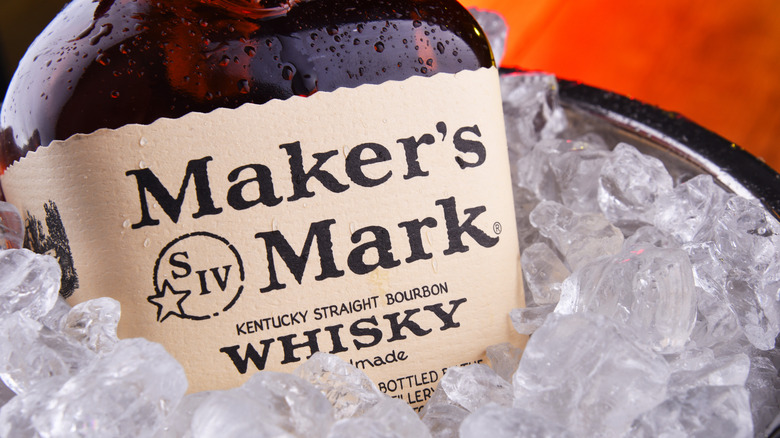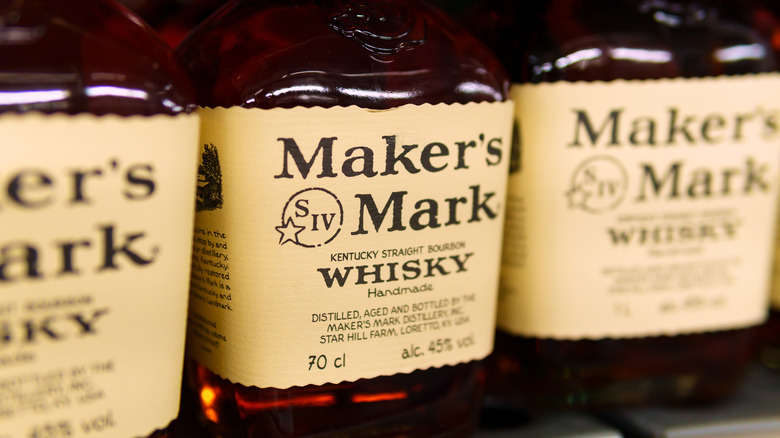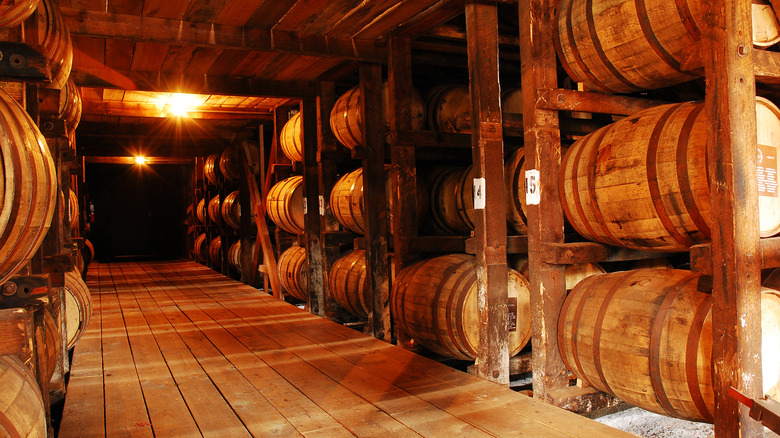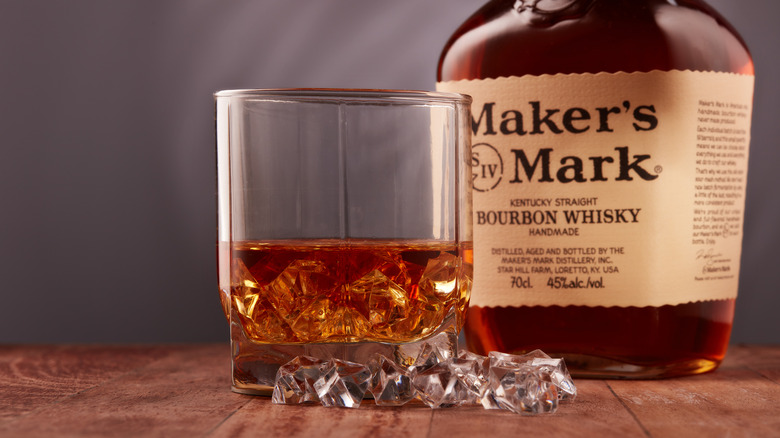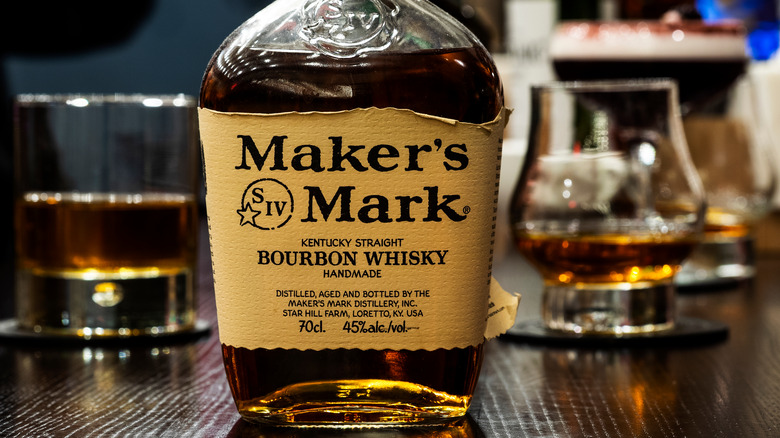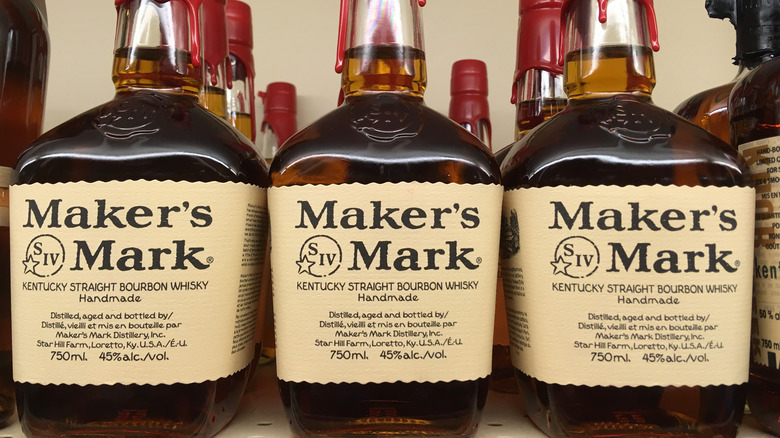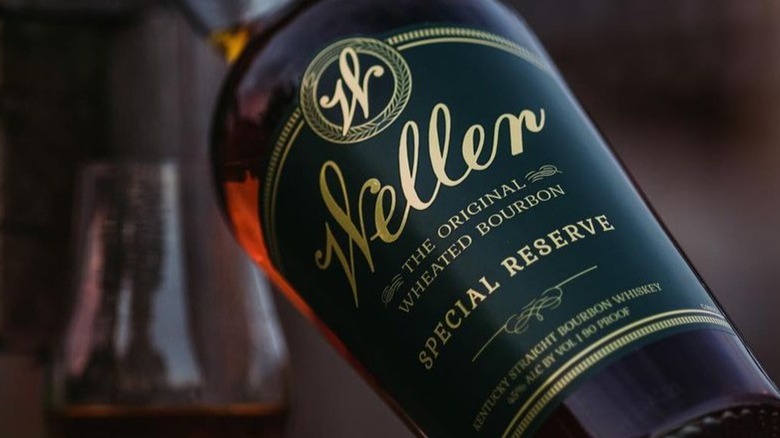Maker's Mark Kentucky Straight Bourbon Whisky: The Ultimate Bottle Guide
There are few bottles of whiskey as instantly recognizable as Maker's Mark. The signature red wax-covered cap, the unique shape of the glass bottle, and the simple label all contribute to this bottle being a powerhouse in the world of drinks. Not only is the bottle one of a kind, but the whiskey itself is also just as delicious as any other.
There are countless bourbon brands that call the state of Kentucky home, but many are found in the notable towns steeped in the spirit's history such as Louisville, Bardstown, or Frankfort. Some of these distilleries date back centuries. Maker's Mark, on the other hand, is still a relatively new brand of bourbon, and its distillery won't be as convenient a stop on the Kentucky Bourbon Trail. In fact, you'll have to travel to Loretto, Kentucky to pay Maker's Mark a visit, but if you do, you will most certainly be glad you did.
Making a trip to the home of Maker's Mark is not at all required to reap its benefits, however. This whiskey is such a titan of its industry, it can most definitely be found in any establishment that sells liquor. Here is everything you need to know about this formidable figure in the bourbon business.
History
Maker's Mark may not have been around as long as other bourbons, some of which date back to the 19th century, but the iconic bourbon brand was quick to leave a profound mark on the bourbon industry.
Maker's Mark was founded by Bill Samuels Sr. in 1953 using a recipe he developed himself, abandoning a family recipe passed down for six generations. His goal was to create a bourbon that "won't blow my ears off," which meant finding a more delicate mash bill, softer than the typical one. Instead of waiting on results from distilling, Samuels baked bread using different combinations of grains and eventually decided the best for his bourbon was one that replaced rye grain with red winter wheat.
This new recipe was different from the other bourbons already available, so Samuels' wife, Margie, took charge of making sure this appearance of the bourbon stood out as well. Margie Samuels was the mastermind of Maker's Mark's marketing, designing the signature bottle shape, label, and hand-dipped wax cap. She even dipped the first bottles herself in her own kitchen. Her contributions to the brand and industry led her to become the first woman elected into the Kentucky Bourbon Hall of Fame. This perfect combination of eye-catching packaging and simply delectable taste is what makes Maker's Mark the bourbon and brand that it is.
Slam dunk bottles
The wax-coated cap of Maker's Mark is undoubtedly the most recognizable aspect of the bottle and the bourbon. The maker's Mark distillery dips an estimated 100 to 200 bottles every hour, according to Vinepair. Every bottle's wax coat is different, but some are set aside because of error. These bottles are not thrown away, however, but actually hold even greater value than their adequately-dipped counterparts.
Bottles that are dipped with a heavy hand or during a lapse of concentration may have a copious amount of wax that drips down passed the neck and onto the label. These are called "slam dunk" or "oops" bottles and have become collector's items sometimes worth double their retail value on auction websites. There are many theories behind slam-dunked bottles. Some believe one in every 100 bottles is dunked, while others believe the number is one in every 1,000. Whether or not the occasional dunked bottle is a marketing ploy by the brand to intrigue customers is also up for debate, as is the theory that distillery staff dunks a bottle every time a grain trolley rolls by.
Whether or not you are interested in buying these rare bottles, they are not an easy find. You can search for one for years and come up short, or, you can take the Maker's mark distillery tour — which ends with each guest hand-dipping their own bottle — and take advantage of the opportunity with a slam dunk of your own.
What is the mark on Maker's Mark?
Designed by Margie Samuels, the iconic label on every bottle of Maker's Mark has a symbol you may have always overlooked or just never understood. This symbol is both etched onto the bottom of the neck of the bottle as well as printed on the label to the left of the word "Mark." The symbol is the letter "s" and the Roman numeral "IV" inside of a circle with a star attached to one end.
This emblem was designed by Margie out of her admiration for the symbols whitesmiths would stamp on their very best work — in other words, their maker's mark. The significance of the star comes from the Star Hill Farm, where Samuel's family resided in Bardstown, Kentucky. The letter "s" stands for "Samuels," and the Roman numeral refers to Bill Samuel's status as a fourth-generation bourbon distiller, per the brand. Eventually, Bill's son found out his father was actually a sixth-generation distiller but decided to leave the symbol unchanged.
Scottish spelling
Another interesting characteristic of the Maker's mark label is the spelling of the word "whisky." This spelling is different from almost every other mass-produced, American whiskey on the market as well as from any whiskey that does not qualify as scotch.
In the 1950s, bourbon whiskey did not taste the way it does today. Nowadays, bourbon is considered a sweeter spirit with a milder alcoholic bite in comparison to liquors such as rye or scotch. Back around the time Maker's Mark was created, bourbon was more similar to moonshine, and was widely thought of as a harsh-tasting, blue-collar spirit meant for the working class. It was Bill Samuels's dream to bring a modern bourbon to market and change the narrative of this drink he saw more potential in. After concluding on his desired mash bills through his loaves of bread, Samuels finally did just that. Along with the clever and cunning packaging of marketing by Margie, Maker's Mark achieved what it set out to do.
This bourbon was a level above its competitors at the time, and the spelling of the word "whisky" on the label reflected that. Spelling the word without the "e" is normally delegated to Scotch whisky, as it is the British spelling. So, in order to convey Maker's Mark's higher-end status, this British spelling was employed to convey its sophistication and quality above the rest. Just another aspect of Margie Samuel's genius.
How it's made
Maker's Mark bourbon starts with its mash. As is the requirement for bourbon, the mash bill must consist of at least 51% corn, according to Distiller. Maker's Mark is 70% corn, 16% red winter wheat, and 14% malted barley, per Difford's Guide. The mash is combined and cooked with limestone water taken directly from the source and watershed on distillery grounds.
The yeast used for Maker's Mark is actually older than the brand itself. It's over 150 years old and comes from the original distillery Bill Samuels purchased to make his new bourbon. Once the yeast ferments, the liquid is strained and distilled in two different stills. One is the original copper still Bill Samuels used and the other is an exact replica made years later. The distillate is finally ready for the step that gives bourbon its color and much of its flavor. Aging is done in oak barrels freshly charred for exactly 40 seconds. This deep char allows the wood to caramelize and open up its fibers to receive the whiskey more deeply. Maturation inside the frequently-rotated barrels can last between six and seven years, but each barrel is aged to taste.
Once the bourbon is deemed suitable by the Master Distiller, it is batched and then diluted down to 90 proof, or 45% alcohol. At last, the bourbon enters a bottle which is dawned with a fresh label and hand-dipped in that iconic red wax before being shipped out for our enjoyment.
What does Maker's Mark taste like?
It is fair to say Maker's Mark has a classic taste, but this is not a classic bourbon. The absence of rye grain and its red winter wheat replacement make for a subtle difference that goes a long way. Wheated bourbons are noticeably smoother than traditional bourbons. They have a softer mouthfeel and an overall delicate character, but this is not to say they are not flavorful. Especially in the case of Maker's Mark, this enhanced approachability makes for more of an emphasis on the barrel notes that comes from the charred oak.
Each sip is kicked off with aromas of sweet oak, vanilla, a light fruitiness, and that foundation of wheat. The taste is instantly recognizable as a straightforward bourbon carrying some of the most common bourbon tasting notes, including aged oak, slight caramel, and vanilla before everything is brought to a seamless, smooth finish thanks to the red winter wheat. While rye grain in the mash would provide more spicey, peppery flavor notes, Maker's Mark is not lacking in flavor. It's as tasty a bourbon as any other, and despite its impeccable smoothness, this 90-proof whiskey remains stiff and robust. If you have never tried bourbon and want to know what it tastes like, sipping on some Maker's Mark is the perfect introduction that requires further comparison.
How to drink Maker's Mark
One of the best parts of Maker's Mark is its ability to fulfill any function you need from your bourbon. It is smooth enough to be sipped neat, or on the rocks, but it is also robust and straightforward enough to mix into the best bourbon cocktails, like an Old Fashioned or Boulevardier, as well as modern classics like a Bourbon Renewal or Kentucky Maid.
The most fundamental way to enjoy your bottle of Maker's Mark, however, is to sip it neat from a Glencairn glass. This type of glassware is specifically designed for whiskey tasting and has a unique shape that allows the spirit to breathe in addition to leaving room for your nose to take in all of the aromas it has to offer. If you are new to bourbon and want to discover all the aromas and flavor notes of Maker's Mark without worrying about a bite, dilute the whiskey with a small amount of water. This will make any alcoholic harshness you want to avoid to dissipate and your senses will be able to focus on the craftsmanship of the whiskey, itself.
Of course, there are no concrete rules that need to be followed to drink Maker's Mark, or any spirit for that matter, the right way. Everyone has their own tastes and preferences, and the most important thing is doing what makes you feel good and get the most out of your bottle.
Is it expensive?
For a whiskey as well-made, popular, and high quality as Maker's Mark, it remains very much affordable. According to Wine Searcher, the average price of a 750 mL bottle of Maker's Mark is $30. There are quality bourbons that are less expensive, but not many. Plus, the ones that are cannot hold a candle Maker's Mark's smoothness. This is not to say that all bourbons less expensive than Maker's Mark are not good, but for the superior quality, approachability, and versatility of Maker's Mark, it really can't be beaten with this price point.
As for bourbons that are more expensive, those prices are basically endless. There are certainly bourbons on the market that are aged for longer, are rarer, and serve as a more sought-after status symbol, but the prices you can pay for some of the most expensive bottles of bourbon are almost silly. If you want to splurge on a rare bottle of bourbon and add to your collection, so be it, but expensive does not always mean good. Maker's Mark is your old reliable, and whenever you're in need of a quality bottle of bourbon, you can rest assured you won't have to break the bank.
Maker's Mark vs. W.L. Weller Special Reserve
As stated earlier, it doesn't really make sense to compare Maker's Mark to other popular, widely accessible bourbons such as bottles like Jim Beam, Old Forester, or Wild Turkey. The best way to see if this wheated bourbon can stand up to another, such as W.L. Weller Special Reserve.
W.L. Weller is the original wheated bourbon whiskey and dates all the way back to 1849 when William Larue Weller replaced the second rye grain in his bourbon mashbill to create a softer character. Today, W.L. Weller Special Reserve remains a classic, historical piece of the world of bourbon and is currently owned, produced, and distributed by the legendary Buffalo Trace Distillery in Frankfort, Kentucky.
Both Maker's Mark and W.L. Weller Special Reserve are excellent bourbons that share similar characteristics, flavor notes, and smoothness due to their own respective craftsmanship and dedication to consistency. One characteristic they do not share, however, is their price. According to Wine Searcher, the average cost of a bottle of W.L. Weller Special Reserve is $89, about triple the cost of Maker's Mark. It is a very high-quality, collection-worthy whiskey, of course, but Maker's Mark remains a valid competitor in every category besides industry status. Plus, using a $90 bottle of whiskey to mix a cocktail probably isn't the best way to utilize such an expensive bottle.
